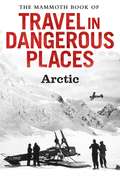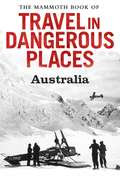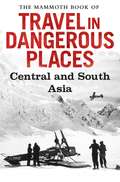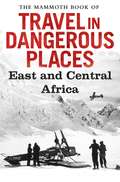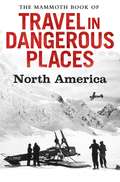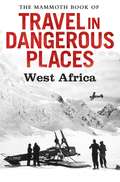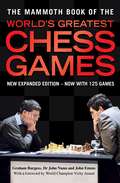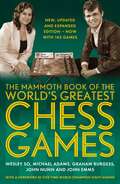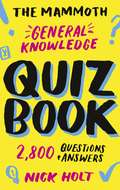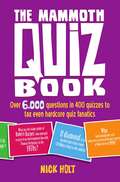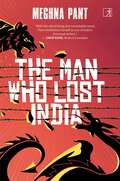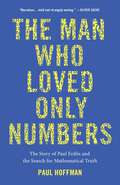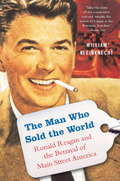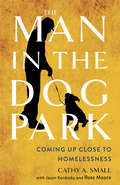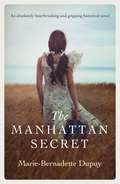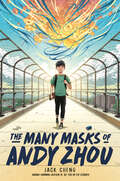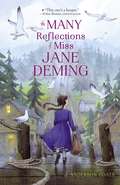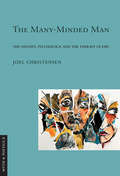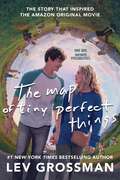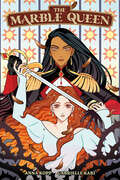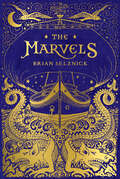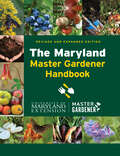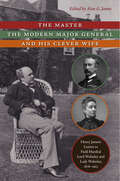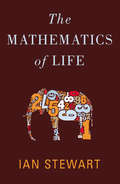- Table View
- List View
The Mammoth Book of Travel in Dangerous Places: Arctic
by John KeayFour Years in the Ice - John RossDisgraced and dishonored for his report of an imaginary mountain range blocking the most likely access to the North West Passage, in 1829 Ross returned to Canada's frozen archipelago to vindicate his reputation. He rounded the north of Baffin Island and entered what he named the Gulf of Boothia. Here the Victory, his eccentric paddle-steamer, became frozen to the ice. Through three tantalizingly brief summers the expedition tried to find a way out and through four long winters then endured the worst of Arctic conditions in a makeshift camp. In July 1832, with the ship long since abandoned, Ross made what must be their last bid to reach open water.Living off Lichen and Leather - John FranklinIn 1845, looking again for the North West Passage, two well-crewed ships under Franklin's command sailed into the Canadian Arctic and were never seen again. There began the most prolonged search ever mounted for an explorer. For Franklin had been lost before and yet had survived. In 1821, returning from an overland reconnaissance of the Arctic coast north of Great Slave Lake, he and Dr. John Richardson, with two Lieutenants and about a dozen voyageurs (mostly French), had run out of food and then been overtaken by the Arctic weather. Franklin's narrative of what is probably the grisliest journey on record omits unpalatable details, like the cannibalism of one of his men, the murder of Lieut. Hood, and Richardson's summary shooting of the murderer; but it well conveys the debility of men forced to survive on leather and lichen (triple de roche) plus that sense of demoralization and disintegration that heralds the demise of an expedition.Adrift on an Arctic Ice Floe - Fridtjof Nansen Norwegian patriot, natural scientist, and Nobel laureate, Nansen caught the world's imagination when he almost reached the North Pole in 1895. The attempt was made on skis from specially reinforced vessel which, driven into the ice, was carried from Siberia towards Greenland. The idea stemmed from his first expedition, an 1888 crossing of Greenland. Then too he had used skis and then too, unwittingly and nearly disastrously, he had taken to the ice. Arrived off Greenland's inhospitable east coast, he had ordered his five-man party to spare their vessel by crossing the off-shore ice floe in rowing boats. A task which he expected to take a few hours turned into an involuntary voyage down the coast of twelve days.The Pole is Mine - Robert Edwin Peary Born in Pennsylvania and latterly a commander in the US navy, Peary had set his sights on claiming the North Pole from childhood. It was not just an obsession but a religion, his manifest destiny. Regardless of cost, hardship, and other men's sensibilities, he would be Peary of the Pole, and the Pole would be American. Critics might carp over the hundreds of dogs that were sacrificed to his ambition, over the chain of supply depots that would have done credit to a military advance, and over the extravagance of Peary's ambition, but success, in 1909, came only after a catalogue of failures; and even then it would be disputed. Under the circumstances his triumphalism is understandable and, however distasteful, not unknown amongst other Polar travelers.
The Mammoth Book of Travel in Dangerous Places: Australia
by John KeayLandfall at Botany Bay - James CookThe son of a Yorkshire farm labourer, Cook won distinction as a naval hydrographer but was still a controversial choice to command a voyage of scientific observation to the Pacific in 1768. Its results, including the first coastal surveys of New Zealand and eastern Australia, led to a second voyage to the south Pacific and a third to the north Pacific, during which he was killed in a fracas with the Hawaiians. It was a tragic end for one whose humble origins disposed him to respect indigenous peoples. "They are far happier than we Europeans", he noted of Australia's aborigines following a brief encounter at Botany Bay (Sydney), the first European landing on the Pacific coast, in 1770.Escape from the Outback - Charles SturtAfter pioneering journeys to the Darling and Murray rivers, in 1844-5 Sturt headed north for the heart of Australia. Since the continent appeared to have few seaward draining rivers it was assumed that, alike Africa, it must boat an inland lake region; a boat was therefore included amongst the expeditions equipment. But Sturt failed to reach the geographical centre of the continent, and the largest stretch of water found was at Coopers Creek, later to figure so prominently in the endeavours of Burke and Wills. Sturt's painful retreat during the hottest summer on record formed a fitting prelude to the Wills saga.Death at Coopers Creek - William John WillsIn early 1861 Robert O'Hara Burke, William Wills and John King reached Australia's northern coast on the Gulf of Carpentaria, thus completing the first transcontinental crossing. Returning the way they had come, after four months of appalling hardship they staggered into Sturt's Coopers Creek where men and supplies had been left to await their return. They were just eight hours too late; the relief party, despairing of their return, had left that very morning. One of exploration's most poignant moments was followed by one of its most protracted tragedies as the expedition tried to extricate itself, failed, faded, and died. Only King survived; three months later he was discovered living with the aborigines; Will's heartbreaking journal was found lying beside his skeleton.To See the Sea - John McDouall StuartModest, dedicated, immensely tough and thoroughly congenial, Stuart was very much an explorer's explorer. With little support or fuss he began probing north from Adelaide in the late 1850's. In 1860 he was the first to reach the centre of the continent, thus completing the work of Sturt. Although Burke and Wills just beat him in the race to cross the continent, Stuart's 1862 route was much longer and more difficult; and he did actually reach the sea. He was also to return alive.
The Mammoth Book of Travel in Dangerous Places: Central and South Asia
by John KeayAlarms amongst the Uzbeks - Alexander BurnesOf all the "forbidden" cities (Timbuktu, Mecca, Lhasa, Riyadh and so on) none enjoyed a more fearsome reputation that Bukhara in Uzbekistan. The first British Indian expedition, that of William Moorcroft in 1819-26, had never returned. Moorcroft's disappearance, like that of Livingstone or Franklin, posed a challenge in itself and preyed on the minds of his immediate successors. Heavily disguised and in an atmosphere of intense intrigue, Burnes and Dr James Gerard crossed the Afghan Hindu Kush in 1832 and approached the scenes of Moorcroft's discomfiture. They would both return; and "Bukhara Burnes" would become the most renowned explorer of his day.On the Roof of the World - John WoodIn 1937 Alexander Burnes returned to Afghanistan on an official mission. Amongst his subordinates was a ship's lieutenant who, having surveyed the navigational potential of the river Indus, took off on a mid-winter excursion into the unknown Pamirs between China and Turkestan. Improbably, therefore, it was John Wood, a naval officer and the most unassuming of explorers, who became the first to climb into the hospitable mountain heartland of Central Asia and the first to follow to its source the great river Oxus (or Amu Darya.)Exploring Angkhor - Henri MouhotBorn in France, Mouhot spent most of his career in Russia as a teacher and then in the Channel Islands. A philologist by training, he also took up natual history and it was with the support of the Royal Zoological Society that in 1858 he set out for South East Asia. From Siam (Thailand) he penetrated Cambodia and Laos, where he died; but not before reaching unknown Angkhor and becoming the first to record and depict the most extensive and magnificent temple complex in the world. His discovery provided the inspiration for a succession of subsequent French expeditions up the Mekong.Over the Karakorams - Francis Edward YounghusbandAs leader of the 1904-5 British military expedition to Lhasa and as promoter of the early assaults on Mount Everest, Younghusband came to epitomize Himalayan endeavour. To the mountain he also owed his spiritual conversion from gung-ho solider to founder of the World Congress of Faiths. His initiation came in 1887 when, as the climax to journey from Peking across the Gobi desert, he determines to reach India over the unexplored Mustagh Pass in the Karakorams - "the most difficult and dangerous achievement in these mountains so far" (S.Hedin).Trials in Tibet - Ekai KawaguchiBy the 1890's the capital of "forbidden" Tibet, unseen by a foreigner since Huc's visit, represented the greatest challenge to exploration. Outright adventurers like the dreadful Henry Savage Landor competed with dedicated explorers like Sven Hedin, all succumbed to to a combination of official vigilance and physical hardship. The exception, and the winner in "the race for Lhasa", was a Buddhist monk from Japan whose expedition consisted of himself and two sheep. Ekai Kawaguchi was supposedly a pilgrim seeking religious texts. His faith was genuine and often tested, as during this 1900 excursion into western Tibet; but he is also thought to have been an agent of the British government in India.
The Mammoth Book of Travel in Dangerous Places: East and Central Africa
by John KeayAmong the Sudanese - James BruceBruce reached the source of the Blue Nile in 1771, a century before the search for the source of the White Nile became headline news. His descriptions of the cruelties and orgies at Gondar, the Ethiopian capital, were greeted with disbelief; so was his account of the Sudanese rulers, and their queens, at Sennar. He was later shown to be an accurate observer as well as the eighteenth century's most intrepid traveller.Not the Source of the Nile - Richard Francis BurtonIn Burton a brilliant mind and dauntless physique were matched with a restless spirit and a deeply troubled soul to produce the most complex of characters. Contemptuous of other mortals, including Speke, his companion and rival, he found solace only in the extremities of erudition and adventure. A Glimpse of Lake Victoria - John Hanning SpekeIn July 1858, while returning from Lake Tanganyika with Burton, Speke made a solo excursion to the north in search of an even larger lake reported by an Arab informant. Although partially blind and unable to ascertain its extent, he named this lake "Victoria" and boldly declared it the long sought source of the White Nile. The Reservoir of the Nile - Samuel White BakerAmongst professional explorers and big game hunters, none was as successful as Baker. A bluff and plausible figure, wealthy and resourceful, he conducted his explorations on the grand scale, invariably reached his goal and invariably reaped the rewards.Last Days - David LivingstoneLivingstone was nurtured in poverty and religious fervour. He reached southern Africa as a missionary doctor but, more suited to solitary exploration, edged north in a series of pioneering journeys into the interior. Encounters on the Upper Congo - Henry Morton StanleyStanley made his name as an explorer by tracking down Livingstone in 1871. But obscure Welsh origins, plus the adoption of US citizenship and professional journalism, did not endear him to London's geographical establishment. His response was to out-travel all contemporaries, beginning with the first ever coast-to-coast crossing of equatorial Africa. A Novice at Large - Joseph ThomsonBarely twenty and just out of Edinburgh University, Thompson was unexpectedly employed on the Royal Geographical Society's 1878 expedition to the Central African lakes. Unlike Burton he admired Africans; unlike Stanley he would not fight them. His motto - "he who goes slowly, goes safely; he who goes safely, goes far" - was never more seriously tested that when, just six weeks inland from Dar es Salaam, his first expedition lost Keith Johnston, its leader and Thompson's only European companion.
The Mammoth Book of Travel in Dangerous Places: North America
by John KeayFirst Crossing of America - Alexander Mackenzie"Endowed by nature with an acquisitive mind and an enterprising spirit", Mackenzie, a Scot engaged in the Canadian fur trade, resolved, as he out it "to test the practicability of penetrating across the continent of America". In 1789 he followed a river (the Mackenzie) to the sea; but it turned out to be the Arctic Ocean. He tried again in 1793 and duly reached the Pacific at Queen Charlotte Sound in what is now British Columbia. Although this was his first recorded overland crossing of the continent, Mackenzie was not given to trumpeting his achievement. In his narrative it passes without celebration and very nearly without mention.Meeting the Shoshonee - Meriwether LewisAs Thomas Jefferson's personal secretary, Lewis was chosen to lead the US government's 1804-5 expedition to explore (and to establish US interests) from Mississippi to the Pacific. Travelling up the Missouri river to the continental divide in Montana, Lewis left the main party under his colleague William Clark, and scouted ahead. With everything now dependant on securing the goodwill of the formidable Shoshonee, he showed admirable caution; but the issue was eventually decided by a fortuitous reunion between the Indian wife of one of his men and her long-lost brethren.
The Mammoth Book of Travel in Dangerous Places: West Africa
by John KeayAlone in Africa - Mungo ParkPark's 1795-7 odyssey in search of the Niger first awakened the world to the feasibility of a white man penetrating sub-Saharan Africa. But unlike his illustrious successors, this quiet tenant farmer's son from the Scottish Borders travelled alone; relieved of his meager possessions, he was soon wholly dependant on local hospitality. In what he called "a plain unvarnished tale" he related horrific ordeals with admirable detachment - never more tested than on his return journey through Bamako, now the capital of Mali.The Road to Kano - Hugh ClappertonIn one of exploration's unhappier sagas two Scots, Captain Hugh Clapperton and Dr. Walter Oudney, were saddled with the unspeakable Major Dixon Denham on a three year journey to Lake Chad and beyond. Clapperton mapped much of northern Nigeria and emerged with credit. Major Denham also excelled himself, twice absconding, then accusing Oudney of incompetence and Clapperton of buggery. Happily the Major was absent in 1824, after nursing his dying friend, Clapperton became the first European to reach Kano.Down the Niger - Richard LanderAs Clapperton's manservant, Lander attended his dying master on his 1825 expedition to the Niger and was then commissioned, with his brother John, to continue the exploration of the river. The mystery of its lower course was finally solved when in 1831 they sailed down through Nigeria to the delta and the sea. Unassuming Cornishmen, the Landers approached their task with a refreshing confidence in goodwill of Africans. It paid of in a knife-edge encounter at the confluence of the Benoue, although Richard subsequently paid the price with his life.Arrival in Timbuktu - Heinrich BarthBorn in Hamburg, Barth was already an experienced traveler and a methodical scholar when in 1850 he joined a British expedition to investigate Africa's internal slave trade. From Tripoli the expedition crossed the Sahara to Lake Chad. Its leader died but Barth continued on alone, exploring vast tract of the Sahel from northern Cameroon to Mali. Timbuktu, previously visited only by A.G. Laing and René Caillié, provided the climax as Barth, in disguise, approached the forbidden city by boat from the Niger.My Ogowé Fans - Mary KingsleySelf-educated while she nursed her elderly parents, Mary Kingsley had known only middle-class English domesticity until venturing to West Africa in 1892. Her parents had died and, unmarried, she determined to study "fish and fetish" for the British Museum. Her 1894 ascent of Gabon's Ogowé River (from Travels in West Africa, 1897) established her a genuine pioneer and an inimitable narrator. She died six years later while nursing prisoners during the Boer War.
The Mammoth Book of True Hauntings (Mammoth Books)
by Peter HainingThis giant collection includes a huge range of 20th-century first-hand accounts of hauntings, such as the American troops who repeatedly saw the ghosts of a dead platoon of men while on patrol in Vietnam; and the witnessed haunting of a house near Tintagel in Cornwall that led actress Kate Winslet to pull out of buying the property.It covers the full spectrum of credible hauntings, from poltergeists (the noisy, dangerous and frightening spirits that are usually associated with pubescent girls, like the Bell Witch), to phantoms (like the Afrits of Saudi Arabia) and seduction spirits (such as the Lorelei, which have lured German men to death).Also included are the notes of the most famous ghost hunters of the twentieth century such as Hans Holzer, Susy Smith (USA); Harry Price, Jenny Randles (UK); Joyce Zwarycz (Australia), Eric Rosenthal (South Africa), and Hwee Tan (Japan). Plus essays by such names as Robert Graves, Edgar Cayce, and M. R. James outlining their own - often extraordinary - conclusions as to just what ghosts might be; along with a full bibliography and list of useful resources.Praise for MBO Haunted House Stories:'A first rate list of contributors ... Hair raising!' Time Out'All we need say is buy it.' Starlog
The Mammoth Book of the World's Greatest Chess Games: New edn
by Graham Burgess John Nunn John EmmsThe 125 greatest chess games of all time, selected, analysed, re-evaluated and explained by a team of British experts and illustrated with over 1,000 chess diagrams. Join the authors in studying these games, the cream of two centuries of international chess, and develop your own chess-playing skills - whatever your current standard. Instructive points at the end of each game highlight the lessons to be learned.First published in 1998, a second edition of The Mammoth Book of the World's Greatest Chess Games in 2004 included an additional 12 games. This edition includes a further 13 games as well as some significant revisions to the analysis and information regarding other games in earlier editions of the book, facilitated by the use of a variety of chess software.
The Mammoth Book of the World's Greatest Chess Games: New edn
by Michael Adams Graham Burgess John Nunn John Emms Wesley SoImprove your chess by studying the greatest games of all time, from Adolf Anderssen's 'Immortal Game' to Magnus Carlsen's world championship victories, and featuring a foreword by five-times World Champion Vishy Anand.This book is written by an all-star team of authors. Wesley So is the reigning Fischer Random World Champion, the 2017 US Champion and the winner of the 2016 Grand Chess Tour. Michael Adams has been the top British player for the last quarter of a century and was a finalist in the 2004 FIDE World Championship. Graham Burgess is the author of thirty books, a former champion of the Danish region of Funen, and holds the world record for marathon blitz chess playing. John Nunn is a three-time winner of both the World Solving Championship and the British Chess Federation Book of the Year Award. John Emms is an experienced chess coach and writer, who finished equal first in the 1997 British Championship and was chess columnist of the Young Telegraph.The 145 greatest chess games of all time, selected, analysed, re-evaluated and explained by a team of British and American experts and illustrated with over 1,100 chess diagrams. Join the authors in studying these games, the cream of two centuries of international chess, and develop your own chess-playing skills - whatever your current standard. Instructive points at the end of each game highlight the lessons to be learned.First published in 1998, a second edition of The Mammoth Book of the World's Greatest Chess Games in 2004 included an additional twelve games. Another new edition in 2010 included a further thirteen games as well as some significant revisions to the analysis and information regarding other games in earlier editions of the book, facilitated by the use of a variety of chess software. This 2021 edition, further updated and expanded, now includes 145 games.The authors have made full use of the new generation of chess analysis engines that apply neural-network based AI.
The Mammoth General Knowledge Quiz Book: 2,800 Questions and Answers
by Nick HoltA bumper collection of 2,800 questions and answers to test even the most ardent quiz fanatic.
The Mammoth Quiz Book: Over 6,000 questions in 400 quizzes to tax even hardcore quiz fanatics
by Nick HoltA comprehensive category killer, with over 6,000 varied questions on every topic imaginable - as well as some you might not imagine. The 400 quizzes are a mixture of general knowledge and specialist rounds all aimed at the popular pub or society quiz market on science and technology; nature and the universe; human geography; history; life as we know it; arts and culture; sports and games; popular culture; celebrities and trivia. The questions are up-to-date, interesting and, unlike much of the competition, accurate.
The Man Who Lost India
by Meghna PantThe year is 2032. China declares war on India. Pillage and plunder ensues. The war comes to an abrupt halt when a supernatural event saves the obscure town of Lalbag from annihilation. Even as China renews its efforts to invade Lalbag, a greater calamity awaits this sleepy town. A Chinese cop stumbles upon a dangerous secret that threatens to end the town&’s immunity. A fierce and forbidden love between a servant and his mistress destroys two families. Meanwhile, the town&’s richest man becomes afflicted with a terrible disease, the town beauty goes mad when her love betrays, and a psychic turns water into blood, sending the town and its people deeper into tragedy. A dystopian never-been-done-before tale set in – and between – China and India, The Man Who Lost India is a powerful portrayal of love, strife and family in the wake of 21st century&’s biggest war. Incantatory and atmospheric, this is Meghna Pant&’s most ambitious novel yet, full of beauty, bloodshed and undeniable feminist power.
The Man Who Loved Only Numbers: The Story of Paul Erdos and the Search for Mathematical Truth
by Paul Hoffman"A funny, marvelously readable portrait of one of the most brilliant and eccentric men in history." --The Seattle Times Paul Erdos was an amazing and prolific mathematician whose life as a world-wandering numerical nomad was legendary. He published almost 1500 scholarly papers before his death in 1996, and he probably thought more about math problems than anyone in history. Like a traveling salesman offering his thoughts as wares, Erdos would show up on the doorstep of one mathematician or another and announce, "My brain is open." After working through a problem, he'd move on to the next place, the next solution. Hoffman's book, like Sylvia Nasar's biography of John Nash, A Beautiful Mind, reveals a genius's life that transcended the merely quirky. But Erdos's brand of madness was joyful, unlike Nash's despairing schizophrenia. Erdos never tried to dilute his obsessive passion for numbers with ordinary emotional interactions, thus avoiding hurting the people around him, as Nash did. Oliver Sacks writes of Erdos: "A mathematical genius of the first order, Paul Erdos was totally obsessed with his subject--he thought and wrote mathematics for nineteen hours a day until the day he died. He traveled constantly, living out of a plastic bag, and had no interest in food, sex, companionship, art--all that is usually indispensable to a human life."The Man Who Loved Only Numbers is easy to love, despite his strangeness. It's hard not to have affection for someone who referred to children as "epsilons," from the Greek letter used to represent small quantities in mathematics; a man whose epitaph for himself read, "Finally I am becoming stupider no more"; and whose only really necessary tool to do his work was a quiet and open mind. Hoffman, who followed and spoke with Erdos over the last 10 years of his life, introduces us to an undeniably odd, yet pure and joyful, man who loved numbers more than he loved God--whom he referred to as SF, for Supreme Fascist. He was often misunderstood, and he certainly annoyed people sometimes, but Paul Erdos is no doubt missed. --Therese Littleton
The Man Who Sold the World: Ronald Reagan and the Betrayal of Main Street America
by William KleinknechtSince Ronald Reagan left office-and particularly after his death-his shadow has loomed large over American politics: Republicans and many Democrats have waxed nostalgic, extolling the Republican tradition he embodied, the optimism he espoused, and his abilities as a communicator. This carefully calibrated image is complete fiction, argues award-winning journalist William Kleinknecht. The Reagan presidency was epoch shattering, but not-as his propagandists would have it-because it invigorated private enterprise or made America feel strong again. His real legacy was the dismantling of an eight-decade period of reform in which working people were given an unprecedented sway over our politics, our economy, and our culture. Reagan halted this almost overnight. In the tradition of Thomas Frank’s What’s the Matter with Kansas?, Kleinknecht explores middle America-starting with Reagan’s hometown of Dixon, Illinois-and shows that as the Reagan legend grows, his true legacy continues to decimate middle America.
The Man in the Dog Park: Coming Up Close to Homelessness
by Cathy A. SmallThe Man in the Dog Park offers the reader a rare window into homeless life.Spurred by a personal relationship with a homeless man who became her co-author, Cathy A. Small takes a compelling look at what it means and what it takes to be homeless. Interviews and encounters with dozens of homeless people lead us into a world that most have never seen. We travel as an intimate observer into the places that many homeless frequent, including a community shelter, a day labor agency, a panhandling corner, a pawn shop, and a HUD housing office.Through these personal stories, we witness the obstacles that homeless people face, and the ingenuity it takes to negotiate life without a home. The Man in the Dog Park points to the ways that our own cultural assumptions and blind spots are complicit in US homelessness and contribute to the degree of suffering that homeless people face. At the same time, Small, Kordosky and Moore show us how our own sense of connection and compassion can bring us into touch with the actions that will lessen homelessness and bring greater humanity to the experience of those who remain homeless.The raw emotion of The Man in the Dog Park will forever change your appreciation for, and understanding of, the homeless life so many deal with outside of the limelight of contemporary society.
The Manhattan Secret: An absolutely heartbreaking and gripping historical novel
by Marie-Bernadette DupuyAn absolutely heartbreaking and gripping historical novel based on a true story, for fans of Suzanne Goldring, Bridgerton and The Girl Behind the Gates.***FROM THE 4-MILLION COPY BESTSELLING AUTHOR******RATED 5 STARS BY REAL READERS***"A wonderfully romantic novel that will capitvate you instantly" -Hart, 5* Amazon reviewer"A fantastic story - I can't wait to read the next volume!" -Michele, 5* Amazon reviewerOctober 1886. Catherine and Guillaume Duquesne set off to New York with their six-year-old daughter Elisabeth. But the young couple's dreams of freedomand independence soon turn into a nightmare when Catherine dies during the journey and Guillaume is assaulted and left for dead soon after their arrival on American soil. A wealthy family adopts Elisabeth, who grows up spoiled and happy. But when she turns 16, she learns the truth about her origins and decides to return to France to meet her real family. Upon her arrival she realises that her grandfather's house, too, is seething with secrets...What readers think"The author is hugely talented." -Julie, 5* Amazon reviewer"Very attaching characters ... I'm impatient to read the next installment!" -5* Babelio reviewer"I just have to read the rest of the series." -Jean-Pierre, 5* fnac.com reviewer"Reads very well - wait until you read the ending!" -Françoise, 5* Amazon reviewer"An extraordinary author. I strongly recommend!" -Nathalie, 5* Amazon reviewer"I didn't know the author - it's an excellent novel. -Mimi, 5* Amazon reviewer
The Many Masks of Andy Zhou
by Jack ChengCreative and brave sixth grader Andy Zhou faces big changes at school and at home in this new novel by the award-winning author of See You in the Cosmos, for fans of When You Trap a Tiger and The Stars Beneath Our Feet. <P><P> Andy Zhou is used to being what people need him to be: the good kid for his parents and, now, his grandparents in from Shanghai, or the helpful sidekick for his best friend Cindy’s plans and schemes. So when Cindy decides they should try out for Movement on the first day of sixth grade, how can Andy say no? But between feeling out of place with the dancers after school, being hassled by his new science partner Jameel in class, and sensing tension between his dad and grandfather at home, Andy feels all kinds of weird. Then over anime, Hi-Chews, and art, things start to shift between Andy and Jameel, opening up new doors—and new problems. Because no matter how much Andy cares about his friends and family, it’s hard not to feel pulled between all the ways he’s meant to be, all the different faces he wears, and harder still to figure out if any of these masks is the real him.
The Many Reflections of Miss Jane Deming
by J. Anderson CoatsHigh-spirited young Jane is excited to be part of Mr. Mercer&’s plan to bring Civil War widows and orphans to Washington Territory—but life out west isn&’t at all what she expects in this novel that&’s perfect for fans of Avi and Little House on the Prairie.Washington Territory is just the place for men of broad mind and sturdy constitution—and girls too, Jane figures, or Mr. Mercer wouldn&’t have allowed her to come on his expedition to bring unmarried girls and Civil War widows out west. Jane&’s constitution is sturdy enough. She&’s been taking care of her baby brother ever since Papa was killed in the war and her young stepmother had to start working long days at the mill. The problem, she fears, is her mind. It might not be suitably broad because she had to leave school to take care of little Jer. Still, a new life awaits in Washington Territory, and Jane plans to make the best of it. Except Seattle doesn&’t turn out to be quite as advertised. In this rough-and-tumble frontier town, Jane is going to need every bit of that broad mind and sturdy constitution—not to mention a good sense of humor and a stubborn streak a mile wide.
The Many-Minded Man: The "Odyssey," Psychology, and the Therapy of Epic (Myth and Poetics II)
by Joel ChristensenIn The Many-Minded Man, Joel Christensen explores the content, character, and structure of the Homeric Odyssey through a modern psychological lens, focusing on how the epic both represents the workings of the human mind and provides for its audiences—both ancient and modern—a therapeutic model for coping with the exigencies of chance and fate.By reading the Odyssey as an exploration of the constitutive elements of human identity, the function of narrative in defining the self, and the interaction between the individual and their social context, The Many-Minded Man addresses enduring questions about the poem, such as the importance of Telemachus's role, why Odysseus must tell his own tale, and the epic's sudden and unexpected closure. Through these dynamics, Christensen reasons, the Odyssey not only instructs readers about how narrative shapes a sense of agency but also offers solutions for avoiding dangerous stories and destructive patterns of thought.
The Map of Tiny Perfect Things
by Lev GrossmanFrom #1 New York Times bestselling author Lev Grossman comes a magical-realist romance that turns the Groundhog Day premise inside-out and upside-down—coming soon to Amazon as a major motion picture.Mark is 17-years-old and trapped in a time loop, and that&’s just fine with him. It&’s summertime and he&’s spending this one infinitely repeating day reading his way through the town library. Then he discovers someone else in the loop with him: the brilliant, haunted Margaret. Together Mark and Margaret set out to find every wonderful, amazing, perfect thing that happens in that one day—a journey that will take them to the dark secret that waits at the very heart of their endless day. Thrilling, funny, and deeply romantic, this novella is perfect for fans of John Green, Nicola Yoon, and Jandy Nelson.
The Marble Queen
by Anna KoppA sapphic YA graphic novel with sword fighting, political intrigue and magic where the princess needs a marriage alliance for the welfare of her kingdom, but she unknowingly accepts a proposal from a mysterious country, having come not from the prince, but his sister.The Marble Queen is a YA fantasy graphic novel that&’s the political drama of Nimona meets the heartfelt romance of The Princess and the Dressmaker, but this time in a sapphic romance surrounded by a mist of magic.Princess Amelia&’s kingdom, Marion, is in shambles after months of their trade routes being ravaged by pirates. Now, it seems the only option left for her is to save it through a marriage alliance. When she gets an exorbitant offer from the royalty of Iliad—a country shrouded in mystery—Amelia accepts without question and leaves her home to begin a new life.But she lands on Iliad&’s shores to find that her betrothed isn't the country&’s prince, but the recently coronated Queen Salira.Shocked, Amelia tries to make sense of her situation and her confused heart: Salira has awakened strange new feelings inside her, but something dark hides behind the queen's sorrowful eyes. Amelia must fight the demons of her own anxiety disorder before she can tackle her wife's, all while war looms on the horizon.
The Marvels
by Brian SelznickDon't miss Selznick's other novels in words and pictures, The Invention of Hugo Cabret and Wonderstruck, which together with The Marvels, form an extraordinary thematic trilogy!A breathtaking new voyage from Caldecott Medalist Brian Selznick.Two stand-alone stories--the first in nearly 400 pages of continuous pictures, the second in prose--create a beguiling narrative puzzle.The journey begins at sea in 1766, with a boy named Billy Marvel. After surviving a shipwreck, he finds work in a London theatre. There, his family flourishes for generations as brilliant actors until 1900, when young Leontes Marvel is banished from the stage.Nearly a century later, runaway Joseph Jervis seeks refuge with an uncle in London. Albert Nightingale's strange, beautiful house, with its mysterious portraits and ghostly presences, captivates Joseph and leads him on a search for clues about the house, his family, and the past.A gripping adventure and an intriguing invitation to decipher how the two stories connect, The Marvels is a loving tribute to the power of story from an artist at the vanguard of creative innovation.
The Maryland Master Gardener Handbook
by University of Maryland Extension - Master Gardener ProgramThe definitive guide to gardening in Maryland and the mid-Atlantic—from the experts at the University of Maryland Extension.Whether you're a novice or an expert gardener, The Maryland Master Gardener Handbook is the resource you need to grow a thriving garden in Maryland and the mid-Atlantic region. This reference details plant terminology, gardening instructions, growing schedules, and species charts featuring color photographs for gardeners in Maryland.Chapters cover essential horticultural topics such as ecology, botany, soils, entomology, and plant diseases. In addition to educating gardeners about the basics, the handbook highlights sustainable gardening content such as the use and care of native plants, integrated pest management, water conservation, and best management practices for gardening in a changing climate. Diving deeper, the handbook also provides information on:• Plant nutrition• Composting and pruning• Weeds and lawns• Herbaceous plants and woody plants• Vegetables and fruits• Native plants, invasive plants, indoor plants, and plant propagation• Landscape design and conservation landscaping• Wildlife and woodlands• Garden tools and equipmentFinally, the guide includes diagnostic keys for all major plant groups and special keys for cultural and environmental problems, as well as information on structural and nuisance pests. Created as part of the curriculum of the University of Maryland Extension Master Gardener Program, The Maryland Master Gardener Handbook is the definitive resource for anyone looking to develop a green thumb.
The Master, the Modern Major General, and His Clever Wife: Henry James's Letters to Field Marshal Lord Wolseley and Lady Wolseley, 1878–1913
by Henry JamesAs his letters attest, for nearly forty years Henry James enjoyed a warm and gratifying friendship with Britain’s foremost soldier of the last quarter of the nineteenth century and his wife. The Wolseleys were notable figures. Lord Wolseley, the field marshal who became Britain’s commander in chief of the British army, was a national hero. Both a bibliophile and an author, Wolseley was described by Henry James to his brother William as an "excellent example of the cultivated British soldier." Lady Wolseley was also well-read, as well as stylish, strong-willed, and shrewd, and in Henry’s view, a delightful correspondent—in short, as the editor writes, "precisely the kind of woman James most admired."In The Master, the Modern Major General, and His Clever Wife, Alan James offers a collection of more than one hundred letters—most of them published here for the first time—that Henry James wrote to the Wolseleys, the majority to Lady Wolseley. Included are an overall introduction to the letters; separate introductory profiles of Lord and Lady Wolseley along with commentaries on the factors that drew James and the Wolseleys together; introductions to each of four sections of the letters, divided chronologically; and annotations throughout, identifying the notable men and women to whom James refers as well as comparing what James and the Wolseleys thought of them and their work.
The Mathematics of Life: The New Mathematics Of The Living World
by Ian StewartBiologists have long dismissed mathematics as being unable to meaningfully contribute to our understanding of living beings. Within the past ten years, however, mathematicians have proven that they hold the key to unlocking the mysteries of our world--and ourselves. In The Mathematics of Life, Ian Stewart provides a fascinating overview of the vital but little-recognized role mathematics has played in pulling back the curtain on the hidden complexities of the natural world--and how its contribution will be even more vital in the years ahead. In his characteristically clear and entertaining fashion, Stewart explains how mathematicians and biologists have come to work together on some of the most difficult scientific problems that the human race has ever tackled, including the nature and origin of life itself.
